Light Temperature and Choosing the Right Christmas Lights for Your Home
Light Temperature and Choosing the Right Christmas Lights for Your Home
Christmas time! A time to really light up the home and make it sparkle! So you’ve dug out all the Christmas decorations and are setting up the tree to decorate but perhaps you find you’re in need of some new Christmas lights? No problem right? Buying new Christmas lights seems like an easy enough task. You’ve found some new ones that are beautiful, festive and they are even the right length for what you need. However the moment you get them home and turn them on, low and behold, to your disappointment the light is too warm and orangey for your taste. Or, on the other hand, the lights have a frosty blue glow that’s too cold for your decorating plans. So today we’re going to give you some light tips to help you to navigate through the Christmas light moguls so you always come out shining.

Link: Glasshouse Brass Opal Art Deco Pendant Light - the Schoolhouse Collection
What is Light Temperature?
So to get started, first a brief introduction into colour temperature and why it’s important. Colour temperature refers to the degrees of Kelvin a light bulb emits on a scale of 1000 to 10000. And simply put, the lower the degrees of Kelvin of a light bulb the warmer and orangeier looking it will become. While the higher the degree of Kelvin the colder and more blue the light the light bulb emits will become. For example a light bulb with a Kelvin of 1800 will be warm while a light bulb with kelvin of 4100 will be cold.

So how do I tell how many Kelvin a light bulb has when buying a light bulb or Christmas lights? Well hopefully somewhere on the packaging or description the light will have a number with a large K next to it. This tells you the degrees of Kelvin the light you are buying has, weather its 1800K or 3000K or 4100K. Alternatively it could describe the light as, Sunset White, Warm White, Horizon Daylight or Daylight. So let’s get into what this all means and what Christmas look each of these colour temperatures is best suited to.
1. Sunset White (1800K) Christmas Lights
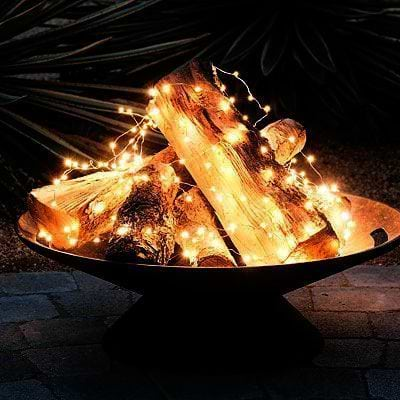
Warm sunset white lights are some of the best lights for creating a vintage and traditional Christmas look. Full of warmth, this light temperature feels like a fireside glow or flickering candlelight that harkens back to Charles Dickens’ days.
Choose this colour temperature for your Christmas lights if you want to create a cosy room with atmosphere that’s full of that sumptuous and classic Christmas feel.

2. Warm White (3000K) Christmas Lights
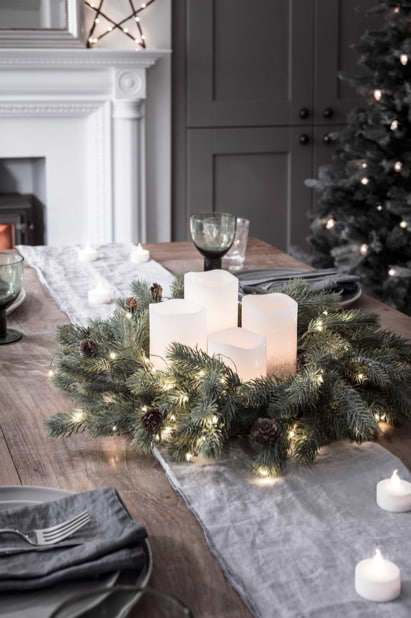
Warm White is also a good choice for your home if you’re looking to create a more traditional Christmas look. Warm and inviting but not quite as fireside orange as the Sunset White, they are probably the most used colour temperature for Christmas light these days.
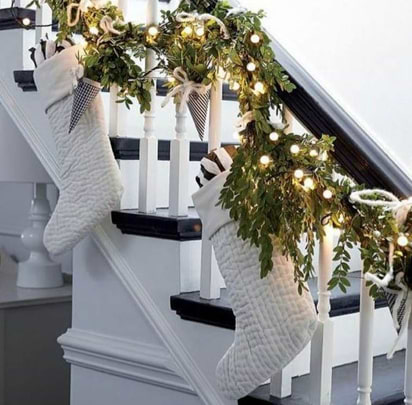
Furthermore these lights tend to have an elegance and richness to them that’s relaxing and cosy, especially on cold winter evenings. They are also very versatile in that they look at home in both modern and traditional interiors. So if you’re still a bit unsure on the right colour temperature for your home, these Christmas lights are a festive and safe bet!
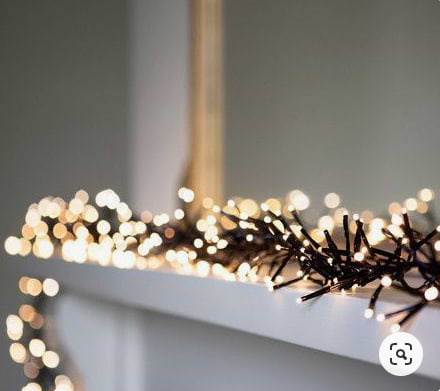
3. Horizon Daylight (4100K) Christmas Lights
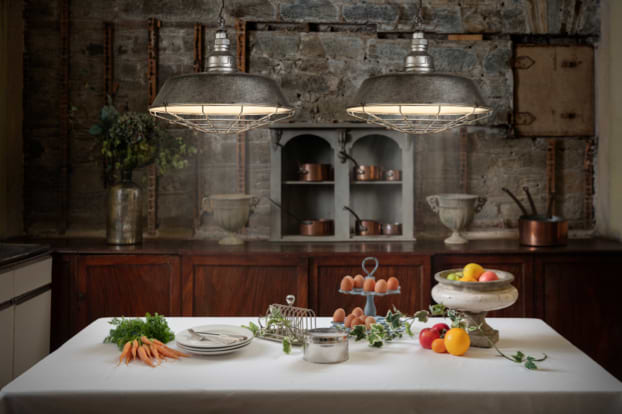
Link: Carnaby Industrial Caged Step Pendant
This is the neutral zone of light temperature and a lot of household lights tend to fall into this category. Otherwise know as Horizon Daylight light. You tend to see this colour temperature a lot in kitchens and places that need a bit more clean light to see and do things by.
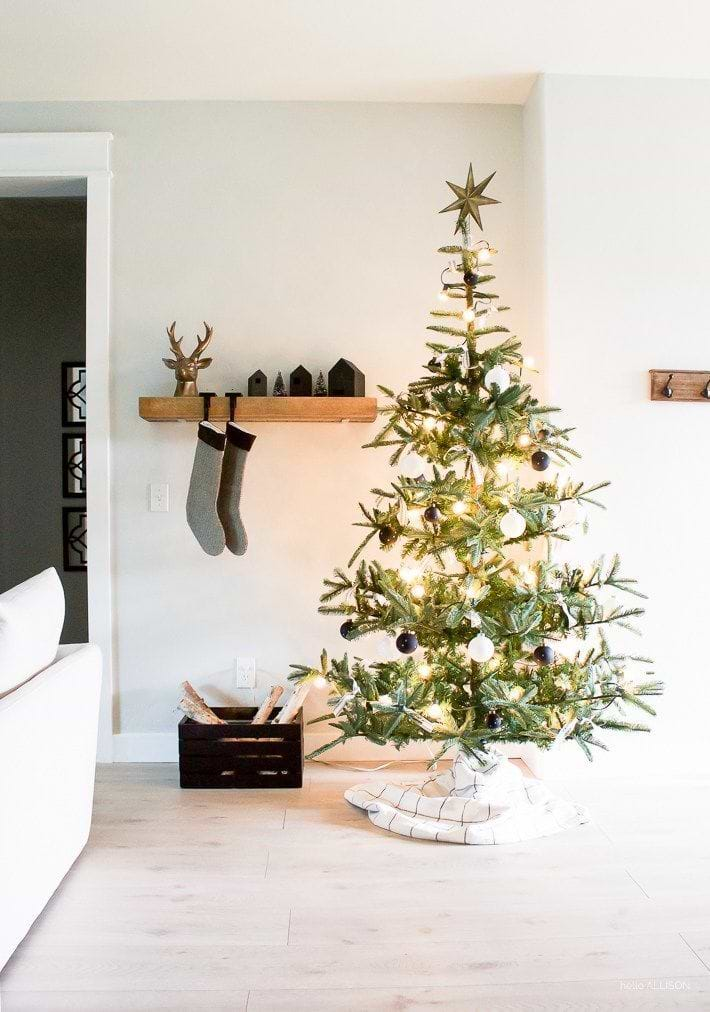
Horizon Daylight would be a good choice for your Christmas Light colour temperature if you are looking for a Christmas décor finish that’s a bit brighter that the warm white. Additionally Christmas lights in this colour temperature will also blend more subtly into the home for a festive look that’s a bit cleaner but also laid back and casual.
4. Daylight (4600K-6500K) Christmas Light
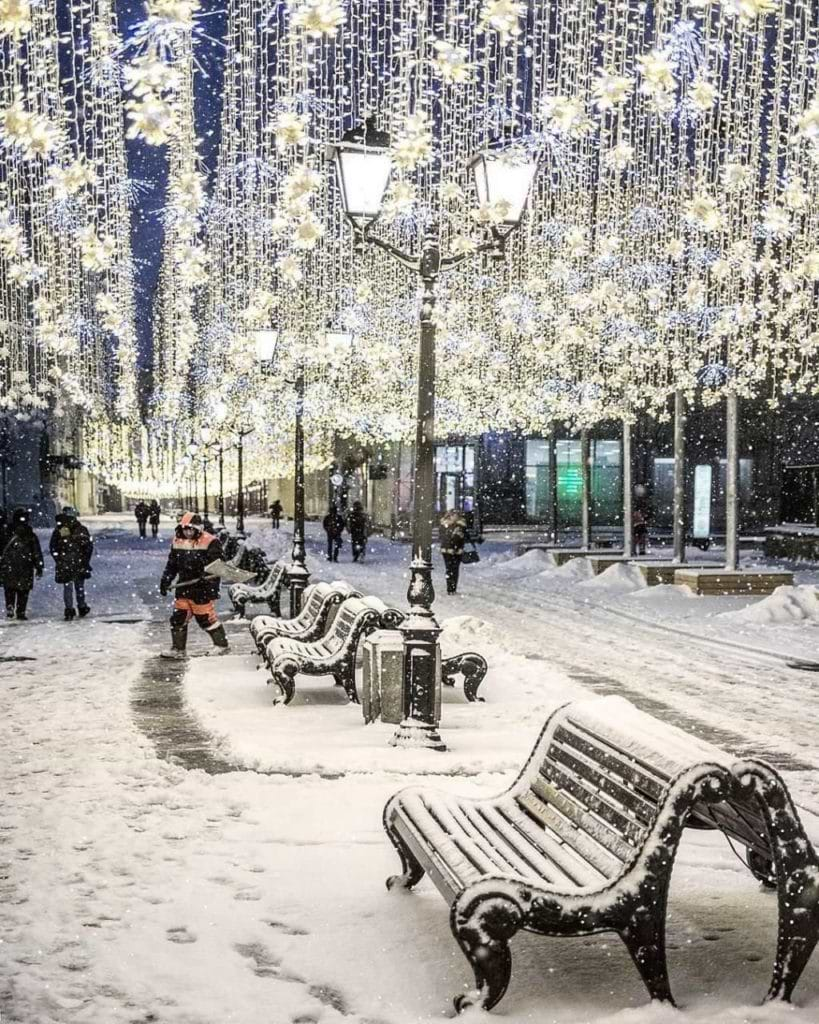
Now onto Daylight colour temperature lights. This Colour temperature tends to not be used in the home often because it can come off looking cold and bluey. However this is perfect for those who want to create a winter wonderland look that’s a reminiscent of snowy mountains, glacial tundra’s and sprinkled with a bit of wild mystery!
5. Cold Blue (6500K-10000K) Christmas lights
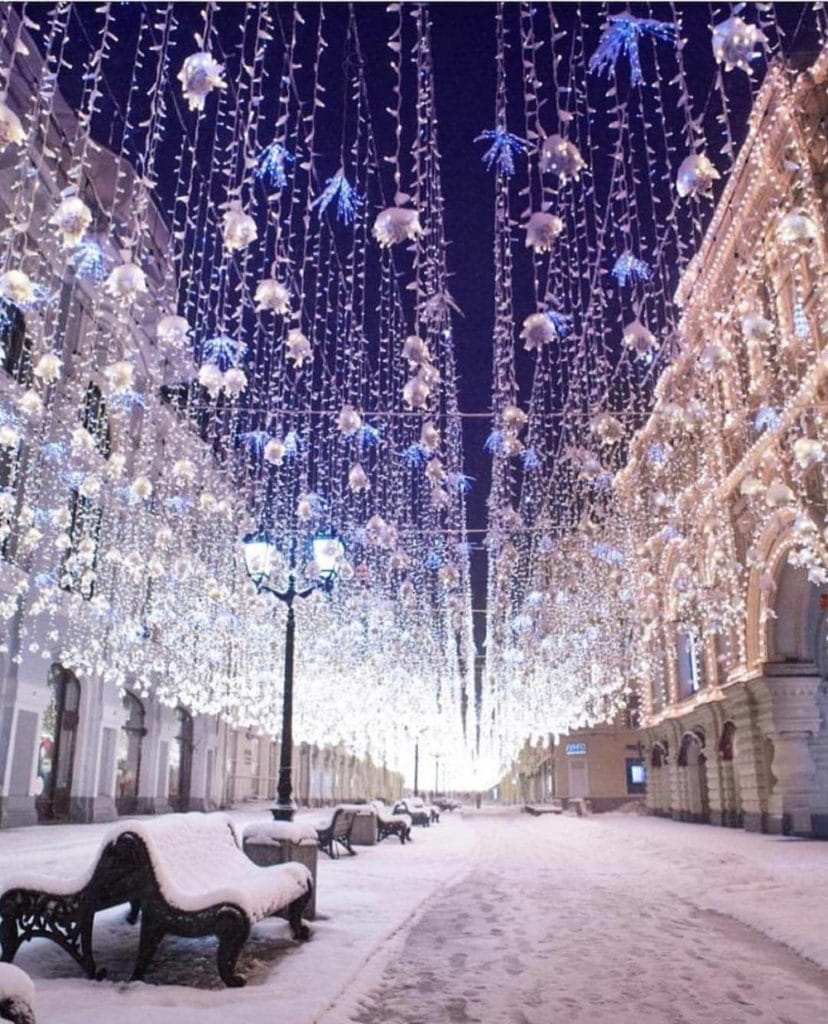
Now if a warm and cosy Christmas look just doesn’t quite do it for you how about trying something a bit cooler for a change? For a décor that’s really frosty, choosing Christmas lights with a high Kelvin is a must! From 7000K up you start to get a really frost bitingly chilly! Cold and tinged with blue, this temperature of light is best suited to the modern interior. Find drop down icicle lights with this colour temperature for a truly wintery and frosty finish! This will turn your home into a frozen ice palace that’s sculpted with icy elegance!
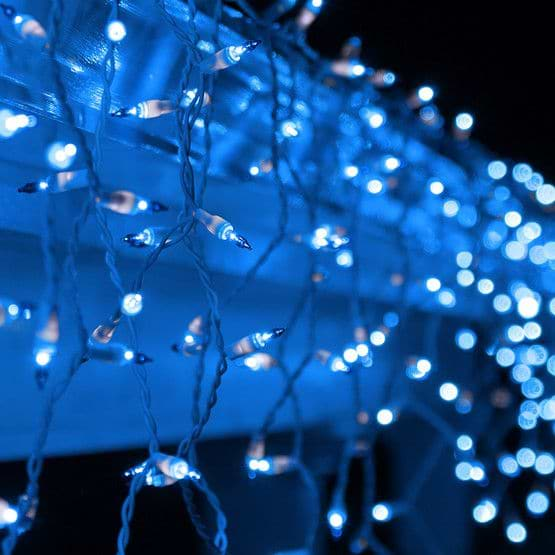
So I hope that has helped illuminate some of differences between the colour temperatures of lights! So now it should be a whole lot easier for you to find the Christmas lights you are looking for! No more disappointments when switching the lights on your carefully adorned home. Good luck with the decorating and have a very merry and colourful Christmas!
